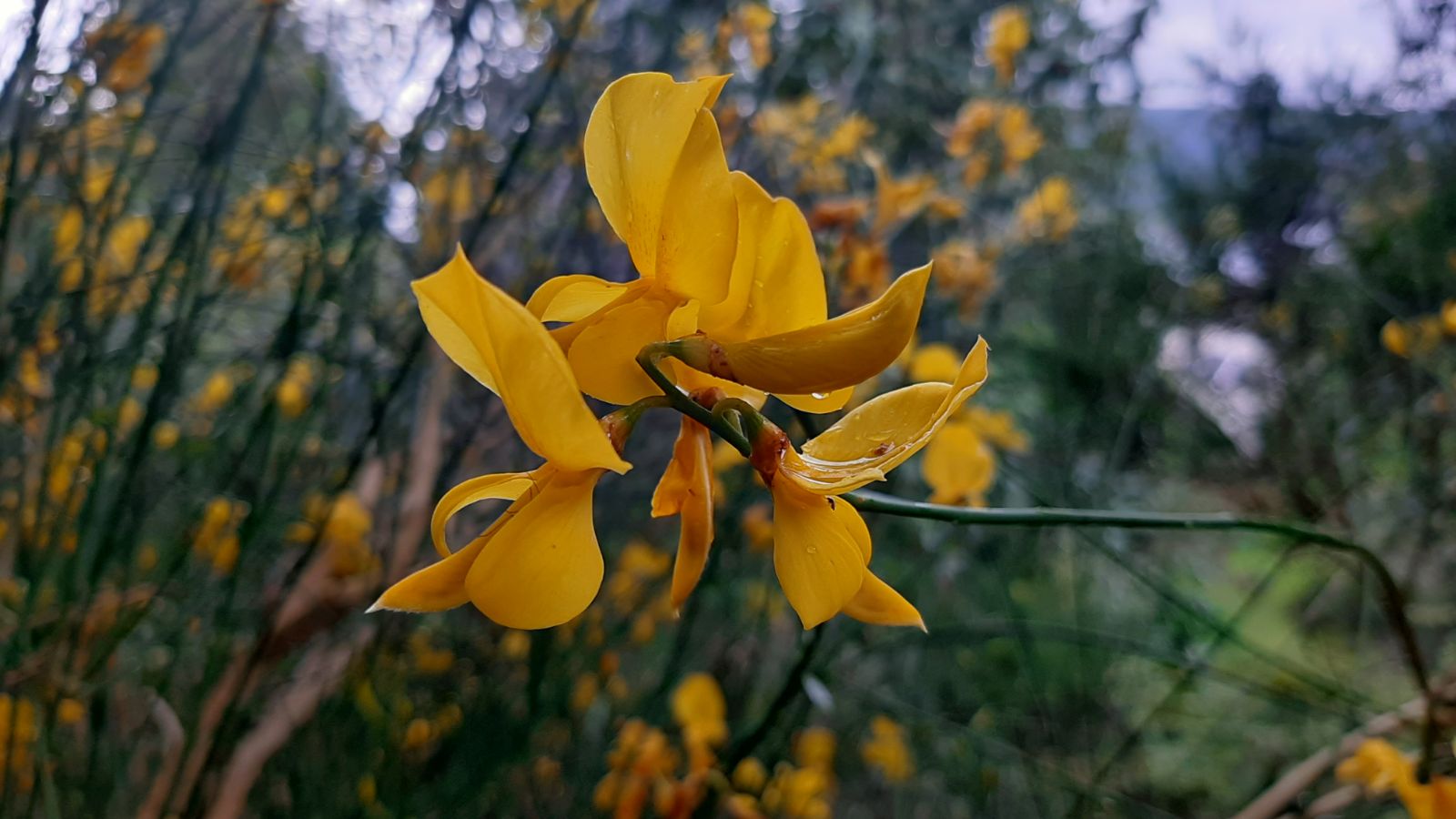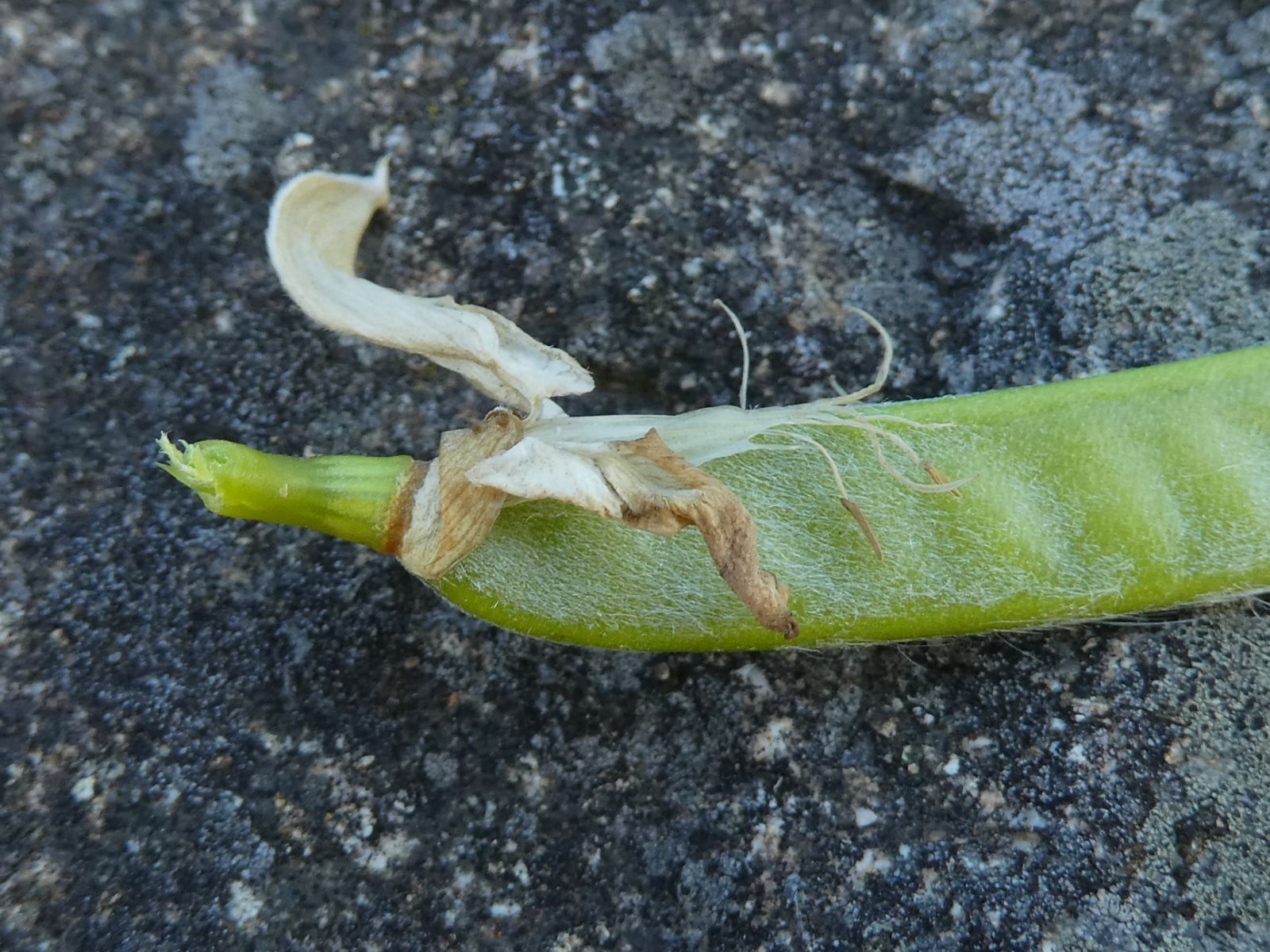Spartium junceum
Credits
Article from Bean's Trees and Shrubs Hardy in the British Isles
Recommended citation
'Spartium junceum' from the website Trees and Shrubs Online (treesandshrubsonline.
A tall shrub of rather gaunt habit, with erect, cylindrical, rush-like stems, glabrous and dark green, which, in the almost entire absence of foliage, fulfil the functions of leaves. It grows 8 to 12 ft high. Leaves very few and deciduous, simple, linear, 1⁄2 to 3⁄4 in. long, with silky hairs beneath. Flowers fragrant, disposed in terminal racemes 12 or even 18 in. long, on the current season’s growth. Each flower is about 1 in. long, pea-shaped (papilionaceous), shortly stalked, rich glowing yellow, with a showy, roundish standard petal nearly 1 in. across. The upper edge of the keel towards the base is sensitive. If it be touched by a pencil point (or the proboscis of an insect) the stamens spring out from the keel, ejecting the pollen in a little cloud. Pods 11⁄2 to 3 in. long, 1⁄4 in. wide, hairy, five- to twelve-seeded.
Native of S. Europe, N. Africa, Anatolia, the Crimea and W. Syria; if the ‘Spartum frutex’ of William Turner’s Names of Herbes was this species, it was already established in gardens as early as 1548.
S. junceum is a useful shrub whose value is enhanced by its coming into bloom in June and lasting until September. In July, when it is at its best, it is very showy. It is admirable for planting on hot dry banks, especially if it be associated with a dwarfer shrub (like double-flowered gorse), which will hide its gaunt and naked base. But in the ordinary reaches of the garden also it makes very effective groups, and gives masses of welcome colour when shrubs generally have gone out of flower. It must be raised from seeds (which ripen in abundance), and kept in pots until planted out in permanence, for it dislikes disturbance at the root. Sometimes it is grown as a formal bush, being clipped over with shears in early spring before growth starts; shoots then spring out all over the bush, which blossom in their due season a few months later.
The shrub has some economic value in the south of Europe, yielding a fibre which is obtained from the branchlets by maceration, and is worked up into thread, cordage, and a coarse fabric.








